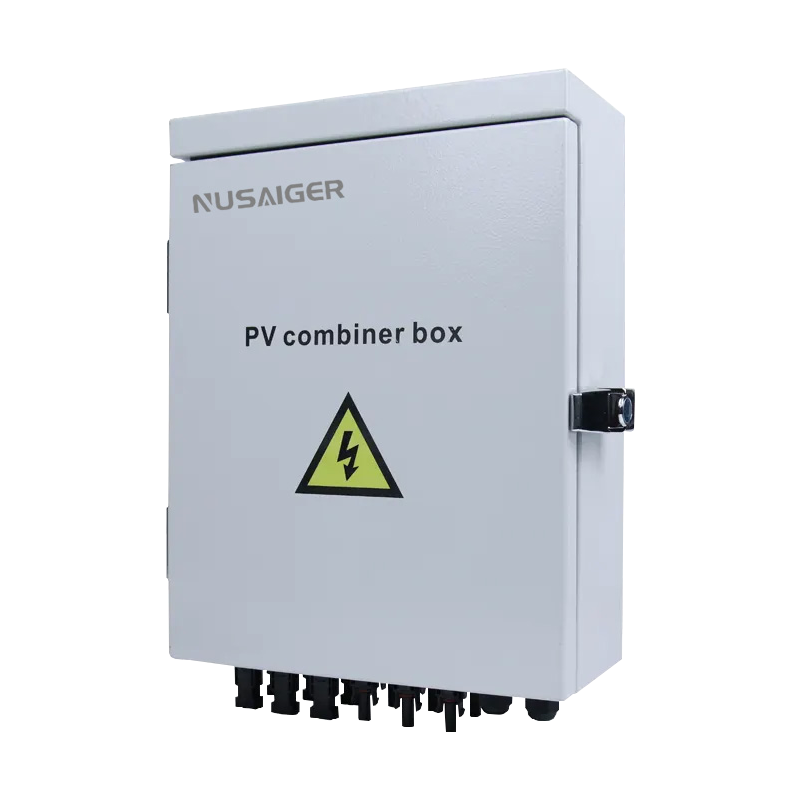Understanding PV Combiner Boxes: A Deep Dive into Function, Selection, and Installation
As the solar industry continues to scale, ensuring efficient and safe power collection from multiple photovoltaic (PV) strings becomes crucial. This is where the PV combiner box comes into play. This essential component is designed to simplify solar array wiring, enhance safety, and improve system performance. But how does it really work, and what should you consider before buying one?
What is a PV Combiner Box?
A PV combiner box—also known as a solar combiner box—is an electrical enclosure that consolidates multiple solar panel outputs into a single or smaller number of DC outputs. By integrating fuses or breakers, surge protection devices, and monitoring equipment, the combiner box enables centralized control of a solar array’s DC side before it’s sent to the inverter.
Key Functions of a Solar Combiner Box
- String Integration: Combines power from multiple PV strings into a single output.
- Overcurrent Protection: Houses fuses or circuit breakers to protect wiring and panels from overcurrent scenarios.
- Surge Protection: Includes SPD (Surge Protective Devices) to guard against voltage spikes due to lightning or grid disturbances.
- Monitoring Support: Allows integration of monitoring systems to track performance and identify issues quickly.
Types of PV Combiner Boxes
Depending on the application, PV combiner boxes can vary by configuration, string count, voltage rating, and environmental resistance. Common types include:
- Indoor vs Outdoor: Outdoor models feature weatherproof enclosures (e.g., IP65 or NEMA 4X rated).
- Fused vs Breaker-Based: Some boxes use fuses for overcurrent protection, others use miniature circuit breakers (MCBs).
- Smart vs Standard: Smart combiner boxes include real-time monitoring, alarms, and remote control capabilities.
How to Choose the Right PV Combiner Box
Choosing the wrong combiner box can affect system safety and efficiency. Here are the key factors to consider:
- String Count: Ensure the box supports the number of strings in your PV array.
- Voltage & Current Ratings: Confirm the rated DC voltage and current exceed your system’s requirements.
- Environmental Conditions: Use outdoor-rated boxes for exposed installations; indoor boxes for sheltered spaces.
- Component Quality: Ensure all internal components (MCBs, SPDs, terminals) are from reputable manufacturers.
- Compliance: Look for certifications like IEC, UL, or CE, which guarantee product safety and compatibility.
Installation Best Practices
Proper installation ensures performance and longevity:
- Mount Securely: Place the box in an accessible but secure location, away from water accumulation or mechanical damage.
- Tight Connections: Use torque-appropriate tools and confirm wire sizes match current ratings.
- Grounding: Ground both the enclosure and PV negative to avoid electric shock and maintain system balance.
- SPD Positioning: Surge devices should be as close to the input terminals as possible.
Benefits of Using PV Combiner Boxes
- Simplified Wiring: Reduces the number of direct cables going to the inverter.
- Increased Safety: Centralized protection avoids damage from overloads or surges.
- Easier Maintenance: Fault detection is easier with centralized monitoring and fuse replacement access.
- Improved System Reliability: Standardized, enclosed systems reduce risk of human error during installation and inspection.
Common Mistakes to Avoid
- Underestimating Voltage: Choosing a 600V box for a 1000V system can be dangerous.
- Poor Ventilation: Overheating can degrade the box’s performance and lifespan.
- Ignoring Maintenance: Failure to inspect regularly can lead to unnoticed fuse blowouts or corrosion.
Conclusion
A PV combiner box may seem like a passive component, but it plays a critical role in consolidating, protecting, and managing power in solar energy systems. Whether for a residential rooftop or a large-scale solar farm, the right combiner box enhances safety, optimizes performance, and simplifies maintenance.
As solar technology advances, smart combiner boxes with real-time monitoring and digital features are becoming more popular, offering data-driven insights to further improve PV system reliability and ROI. Selecting a high-quality, appropriately-rated combiner box is not just a technical decision—it’s a long-term investment in your energy infrastructure.



